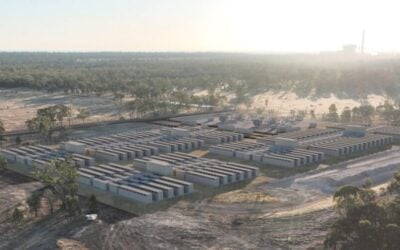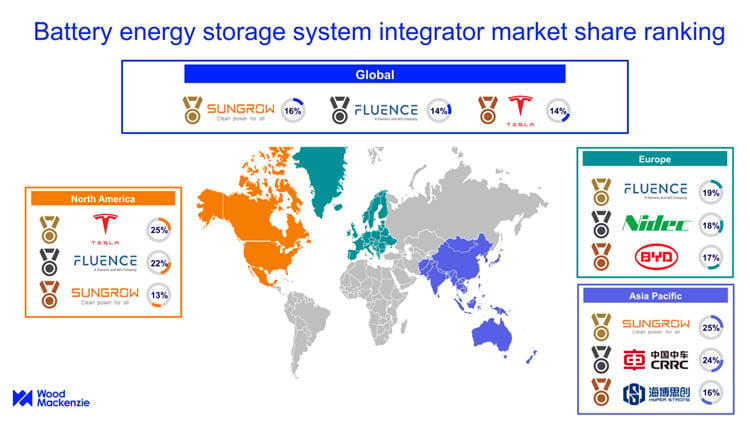
Report on Brookfield Renewable Corp. and Its Role in Sustainable Development Goals (SDGs)
Overview of Brookfield Renewable Corp.
Brookfield Renewable Corp. (BEPC) operates as a significant entity within the renewable energy sector, managed under the umbrella of Brookfield Asset Management (BAM). It has a sister company, Brookfield Renewable Partners (BEP), with both entities representing the same business model and paying identical quarterly dividends. However, Brookfield Renewable Corp. offers a dividend yield of 4.7%, whereas Brookfield Renewable Partners provides a distribution yield of 5.8%.
Structural and Investment Context
Brookfield Renewable Partners was initially established as a partnership, limiting institutional investor participation due to investment mandates. To broaden investor access, Brookfield Renewable Corp. was created as a corporate share class, which has gained more popularity, reflected in the differing yields. Both entities serve as permanent capital sources for Brookfield Asset Management, facilitating investments in clean energy infrastructure.
Alignment with Sustainable Development Goals
Brookfield Renewable Corp.’s operations directly contribute to several United Nations Sustainable Development Goals (SDGs), including:
- SDG 7: Affordable and Clean Energy – By investing in renewable power assets such as solar, wind, hydroelectric, battery storage, and nuclear power, Brookfield Renewable supports the transition to sustainable energy sources.
- SDG 9: Industry, Innovation, and Infrastructure – The company’s global portfolio development fosters resilient infrastructure and promotes sustainable industrialization.
- SDG 13: Climate Action – Through its commitment to clean energy investments, Brookfield Renewable contributes to reducing greenhouse gas emissions and mitigating climate change.
Business Operations and Growth Strategy
Portfolio and Global Reach
Brookfield Renewable Corp. manages a diversified portfolio of renewable energy assets, including:
- Solar power
- Wind energy
- Hydroelectric power
- Battery storage systems
- Nuclear power facilities
Its operations span multiple continents, including North America, South America, Europe, and Asia, positioning the company as a comprehensive platform for clean energy investment worldwide.
Dividend Growth and Financial Sustainability
The company aims for annual dividend increases between 5% and 9%, supported by the expansion of its renewable energy portfolio. This growth is underpinned by Brookfield Asset Management’s strategic plans to approximately double its clean energy investments between 2025 and 2030, reinforcing the company’s role in sustainable economic development.
Dynamic Asset Management
Unlike traditional regulated electric utilities, Brookfield Renewable’s portfolio is actively managed with ongoing asset acquisitions and dispositions. This dynamic approach ensures the company adapts to evolving market conditions and investment opportunities, maintaining a reliable income stream backed by energy contracts.
Investment Implications and Long-Term Outlook
Potential for Lifetime Income
Given its strategic positioning and Brookfield Asset Management’s growth trajectory, Brookfield Renewable Corp. presents a promising opportunity for investors seeking sustainable, long-term income streams. The company’s commitment to renewable energy aligns with global sustainability priorities and the SDGs, enhancing its appeal to socially responsible investors.
Considerations for Investors
- Understand the complex structure involving Brookfield Renewable Corp., Brookfield Renewable Partners, and Brookfield Asset Management.
- Recognize the differences in dividend yields and investor eligibility between corporate shares and partnership units.
- Evaluate the company’s role in advancing SDGs related to clean energy and climate action.
Conclusion
Brookfield Renewable Corp. serves as a vital vehicle for investment in renewable energy infrastructure, directly supporting multiple Sustainable Development Goals. Its diversified portfolio, global reach, and growth-oriented strategy position it as a key player in the transition to a sustainable energy future, offering investors the potential for reliable and growing income aligned with global sustainability objectives.
1. Sustainable Development Goals (SDGs) Addressed or Connected
- SDG 7: Affordable and Clean Energy
- The article discusses Brookfield Renewable Corp.’s investments in renewable power assets including solar, wind, hydroelectric, battery storage, and nuclear power, which directly contribute to increasing access to clean and sustainable energy sources.
- SDG 9: Industry, Innovation, and Infrastructure
- Brookfield Renewable Corp. is involved in developing and managing clean energy infrastructure globally, supporting sustainable industrialization and fostering innovation in energy production.
- SDG 13: Climate Action
- By investing in renewable energy and clean power sources, the company contributes to reducing greenhouse gas emissions and mitigating climate change impacts.
- SDG 8: Decent Work and Economic Growth
- The company’s growth plans and reliable dividend income support economic growth and provide opportunities for investment and employment in the clean energy sector.
2. Specific Targets Under Those SDGs Identified
- SDG 7: Affordable and Clean Energy
- Target 7.2: Increase substantially the share of renewable energy in the global energy mix by 2030.
- Target 7.a: Enhance international cooperation to facilitate access to clean energy research and technology.
- SDG 9: Industry, Innovation, and Infrastructure
- Target 9.4: Upgrade infrastructure and retrofit industries to make them sustainable, with increased resource-use efficiency and greater adoption of clean and environmentally sound technologies.
- Target 9.5: Enhance scientific research and upgrade the technological capabilities of industrial sectors.
- SDG 13: Climate Action
- Target 13.2: Integrate climate change measures into national policies, strategies, and planning.
- SDG 8: Decent Work and Economic Growth
- Target 8.4: Improve progressively, through 2030, global resource efficiency in consumption and production.
- Target 8.5: Achieve full and productive employment and decent work for all women and men.
3. Indicators Mentioned or Implied to Measure Progress
- Renewable Energy Capacity and Portfolio Diversification
- The article mentions Brookfield Renewable’s portfolio spanning solar, wind, hydroelectric, battery storage, and nuclear power, implying measurement of installed capacity and diversification as indicators.
- Investment Growth in Clean Energy
- Plans to roughly double Brookfield Asset Management’s investment in clean energy between 2025 and 2030 suggest tracking investment amounts as an indicator.
- Dividend Growth Rate
- The goal of annual dividend increases between 5% and 9% can be an indicator of financial sustainability and growth in the clean energy sector.
- Global Operations and Market Reach
- Operations across North America, South America, Europe, and Asia imply indicators related to geographic expansion and market penetration.
4. Table of SDGs, Targets, and Indicators
| SDGs | Targets | Indicators |
|---|---|---|
| SDG 7: Affordable and Clean Energy |
|
|
| SDG 9: Industry, Innovation, and Infrastructure |
|
|
| SDG 13: Climate Action |
|
|
| SDG 8: Decent Work and Economic Growth |
|
|
Source: fool.com







